The ultimate guide to overtourism solutions and how you can beat this global issue!
Travel has never been easier.
With more and more people exploring the world though, some of our most well-loved destinations are feeling the strain.
What are the overtourism solutions and can you as an individual create an impact?
READ MORE: Check out our ultimate guide to sustainable tourism!
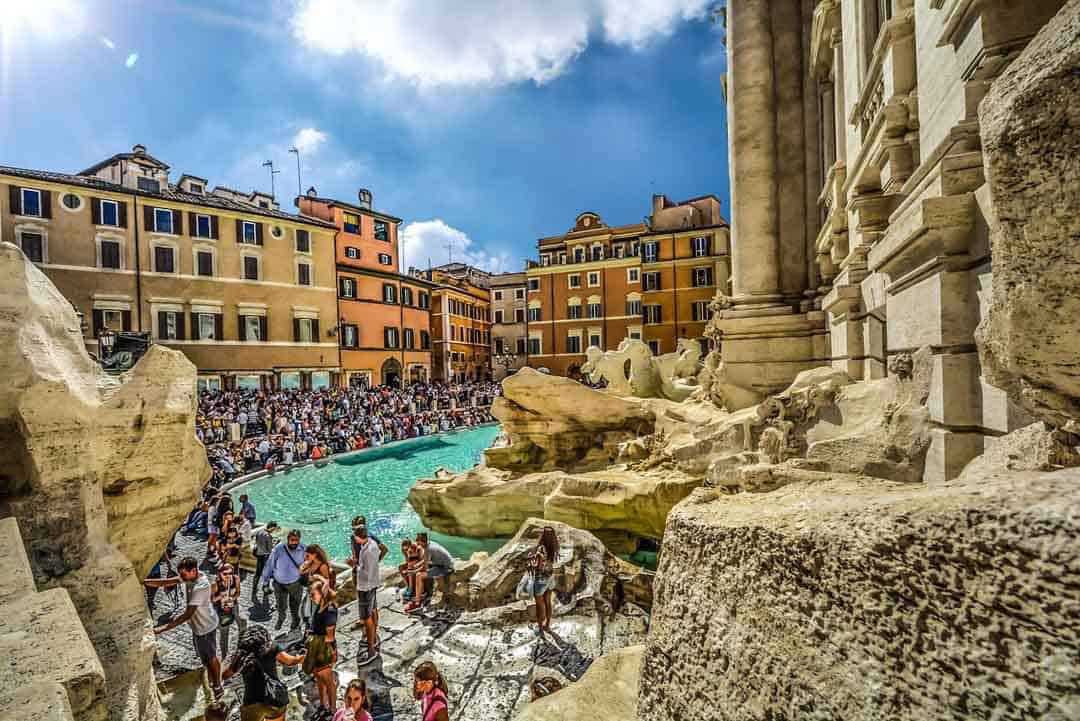
Table of Contents
Overtourism Solutions: Here Are 7 Ways You Can Help Turn The Tide On Overtourism
Our brightly painted long-tail boat motored around the curve of Koh Phi Phi Leh’s sheer karst walls.
I’d been waiting for this moment for years, ever since Leo stepped out from the palms and onto the shore of ‘The Beach’ at the movies.
Between the film, the internet, and my partner John’s nostalgic musings on Thailand in the ’90s, I could picture Maya Bay perfectly: an idyllic haven of pearly white sand lapped by turquoise water, surrounded by high cliffs.
Then the whining roar of a speed boat cut through my reverie, just as the bay opened up before us.
But in place of a peaceful cove, all I could see was an armada of boats.
The bay was a frenzy of activity. Speedboats packed one end of the beach, long-tail boats the other.
Hundreds of people wandered the sandy shore and splashed about in the shallows. Guides blew high-pitched whistles to gather their groups.
Empty beer cans floated in the water, alongside drifts of discarded plastic trash.
Stepping ashore, I felt an abject sense of disappointment and dismay.
I hadn’t been expecting a lost paradise. But the scene before me was more like a paradise lost.
This year, the Thai government took the drastic step of closing Maya Bay to tourists.
The move might be temporary, but this much-loved cove is just one more casualty in a line-up of destinations where an ever-rising wave of tourism is threatening to wash away the very charms that draw us to them in the first place.
There’s a buzzword for the phenomenon too: Overtourism.
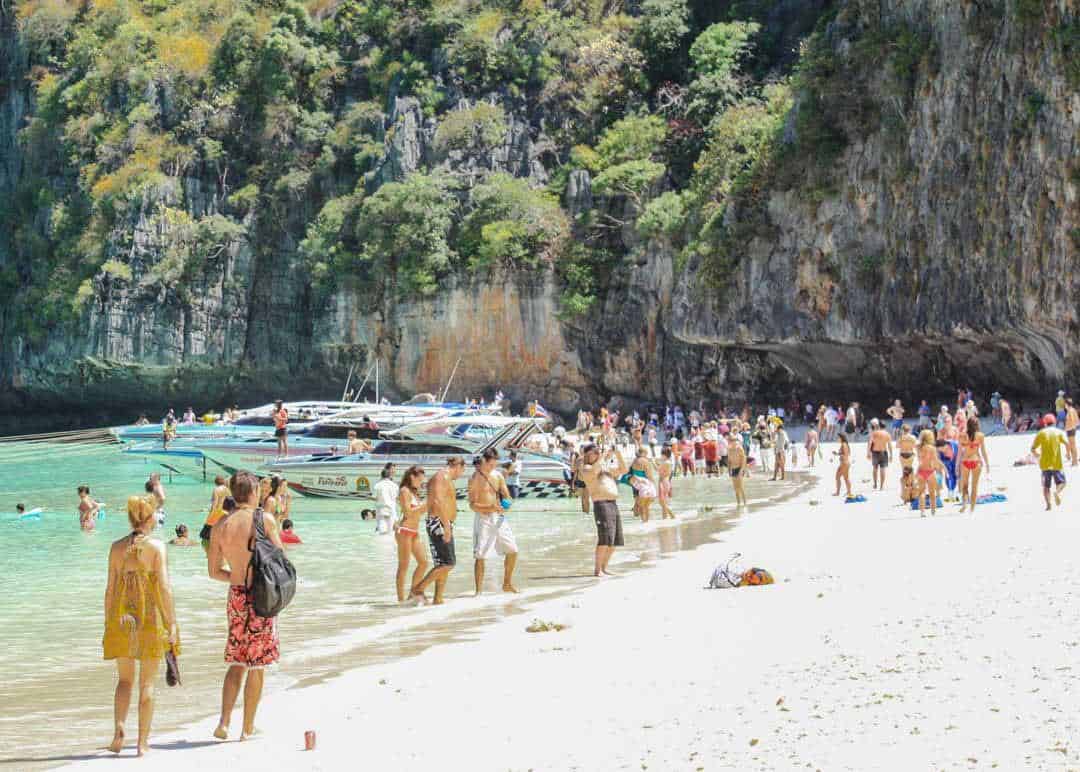
What Is Overtourism?
If you’ve ever experienced the heaving summer crush atop the ancient Acropolis in Athens, or elbowed your way through the high season hordes at the Trevi Fountain in Rome, then you’re familiar with overtourism. I
t’s what happens when a place attracts more tourists that it can reasonably sustain.
The problem of overtourism isn’t limited to cities or sights where mass tourism has taken hold either, though all-inclusive package holidays, big resorts and even bigger cruise ships all play a significant role.
Overtourism can also be an issue for fragile environments, ecosystems and wildlife, where even small increases in visitation can have a long-lasting impact.
Tourism Is A Good Thing…Isn’t It?
Managed well, tourism can be a positive game-changer for destinations.
It creates jobs, attracts investment, drives infrastructure development.
Ethical, sustainable tourism can also improve livelihood, education levels and quality of life for local people.
It can refocus energy and action towards conservation, and help to preserve cultural traditions.
Without checks and balances though, unregulated tourism growth can sound a death knell for some destinations.
Or at the very least, our experience of them.
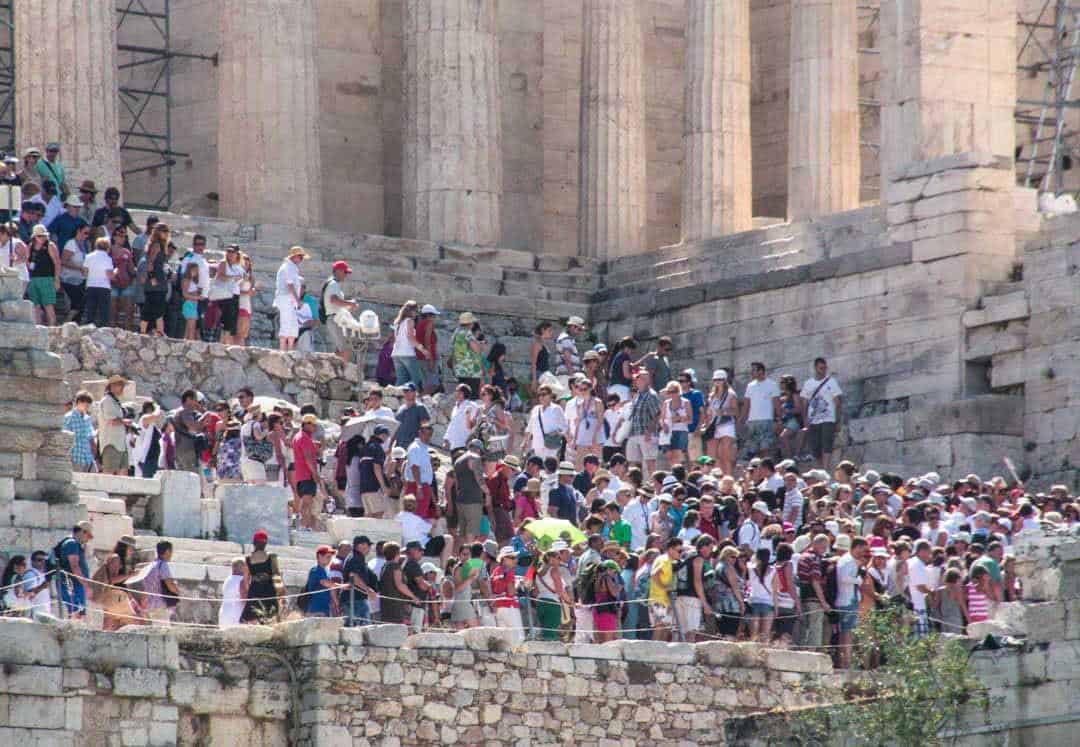
What Are The Impacts Of Overtourism?
When a destination takes on more tourists than it can cope with, the fallout can run deep.
Some Impacts Are Obvious
Overcrowding is one glaring result.
On the Isle of Capri in Italy, peak season can see up to 15,000 visitors a day thronging the narrow, cobbled streets of the ancient holiday escape.
Enjoying a casual wander is almost impossible.
Excessive footfall and human interaction, plus all the extra waste that comes with many more people, can also have a detrimental effect on delicate historic sites and environments.
Machu Picchu, the mountaintop Incan citadel in Peru, is one destination at very real risk of crumbling under the pressure of too much tourist love.
In response, the Peruvian government has implemented morning and afternoon entry sessions and one-way circuits in a bid to control foot traffic, alleviate erosion and protect the 550-year-old stone buildings of this World Heritage jewel.
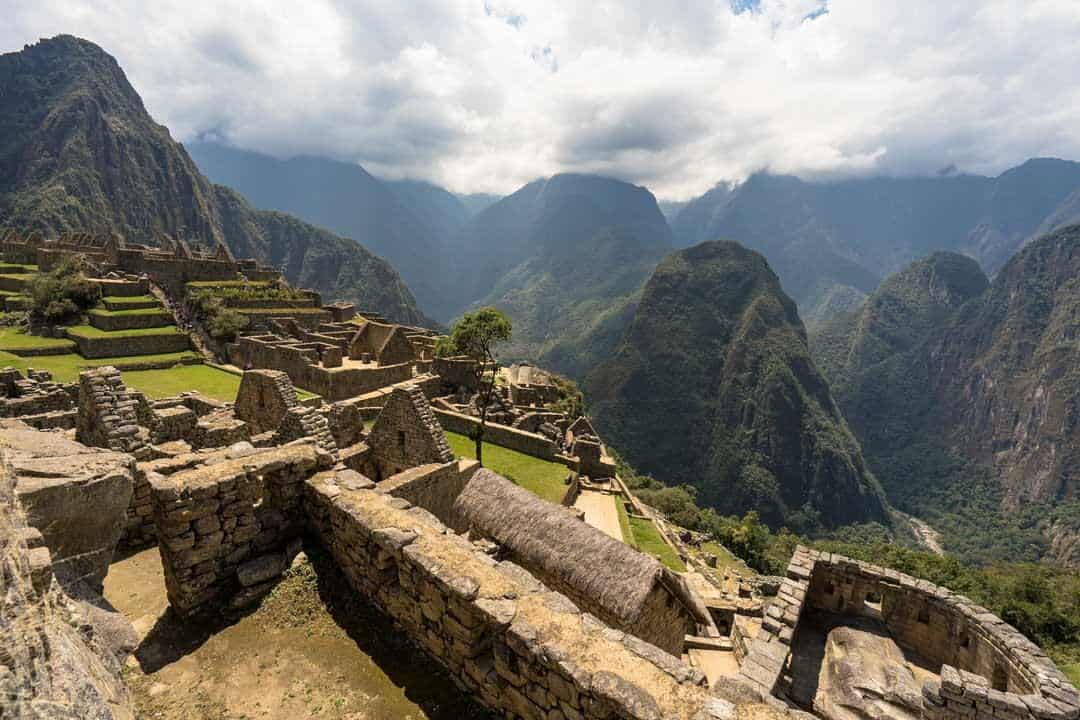
Unchecked tourism can also put wildlife at risk of harm and stress.
We felt this all too keenly on a trip to swim with whale sharks in Mexico.
Despite local efforts to regulate licensing and monitor boats, ever-increasing demand for the experience is driving a rise in unlicensed operators with little regard for rules, or the wildlife.
Other Impacts Take Place Behind The Scenes
Overtourism can also wreak a more insidious havoc.
In Venice, for example, the massive tourist influx in peak has led to rent hikes and housing shortages that are effectively driving locals out of the city.
This creates a different issue altogether.
If you take the inhabitants out of a place, you lose the vibrant characters, stories and cultural idiosyncrasies that bring that destination to life.
Without locals, all you’re really left with is a pretty stage set.
What about all the money generated by that excess of tourism?
In reality, it doesn’t always make its way into local hands or programs.
What little does though can sometimes create an unsustainable reliance on tourism, driving negative behaviours like overzealous touting or begging.
It can also have devastating consequences for locals if tourism suddenly takes a tumble.
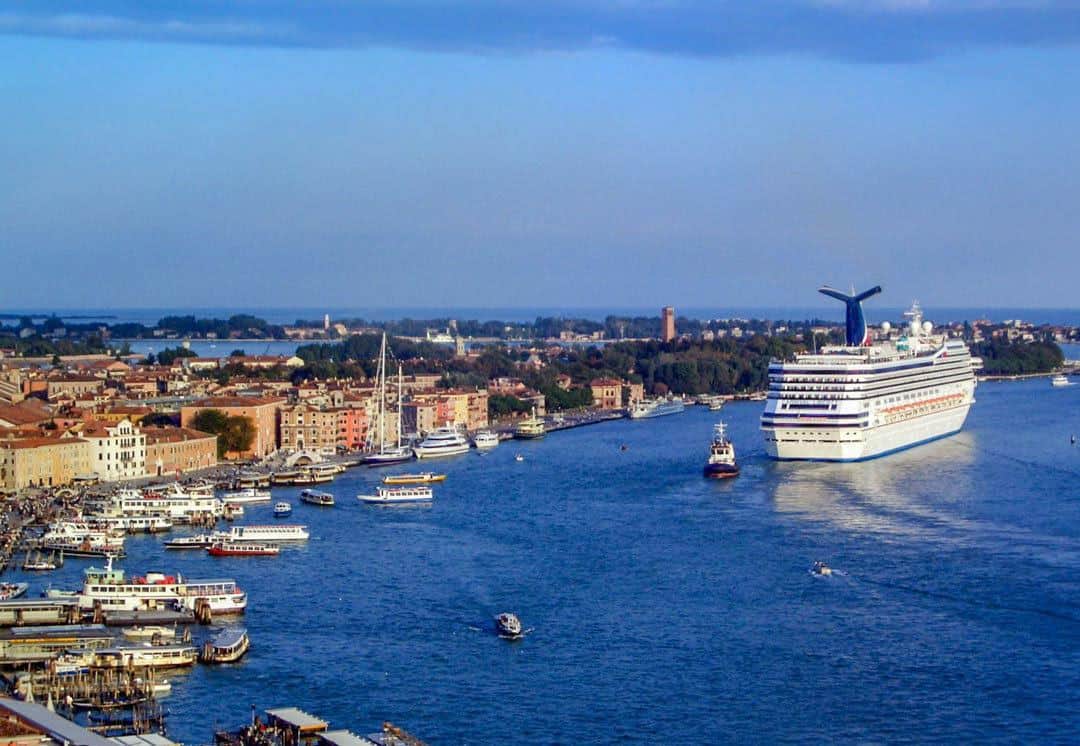
What’s The Solution To Overtourism?
In the big picture, governments and the global tourism industry have a huge task ahead in the fight against overtourism.
Fortunately, many are starting to take note.
In Antarctica, an association-led system of protocols and practices – like collaborating on cruising itineraries, and daily caps on the number of people making shore landings per site – are designed to minimise the pressures of growing tourism on this pristine environment.
If you want to know more about travelling to Antarctica responsibly check out our article.
Likewise, in the Galapagos Islands, there are caps on the number of berths allowed in the cruising tour fleet.
This ensures tourist numbers are limited, at least to the archipelago’s more remote islands, which is critical for protecting their unique ecosystems and wildlife.
Options like tourist taxes and ticketing systems are being explored in some places, along with technological solutions.
In Italy’s hugely popular Cinque Terre, a phone app is being trialed that shows visitors real time congestion on the trails, and points them in the direction of alternatives.
Even one of the world’s most remote destinations, Easter Island, has recently changed the length of stay for tourist visas from 90 days to 30; an effort to curb the impacts of rising tourism on the tiny Pacific isle.
For some places though, like Maya Bay in Thailand, and Boracay Island in the Philippines, the strain of overwhelming visitation has led to the extreme measure of closing the destinations to tourists altogether: an enforced time out for clean-up and recovery.
The challenge will be ensuring that when these places reopen to visitors, they do so with responsible, sustainable tourism measures in place.
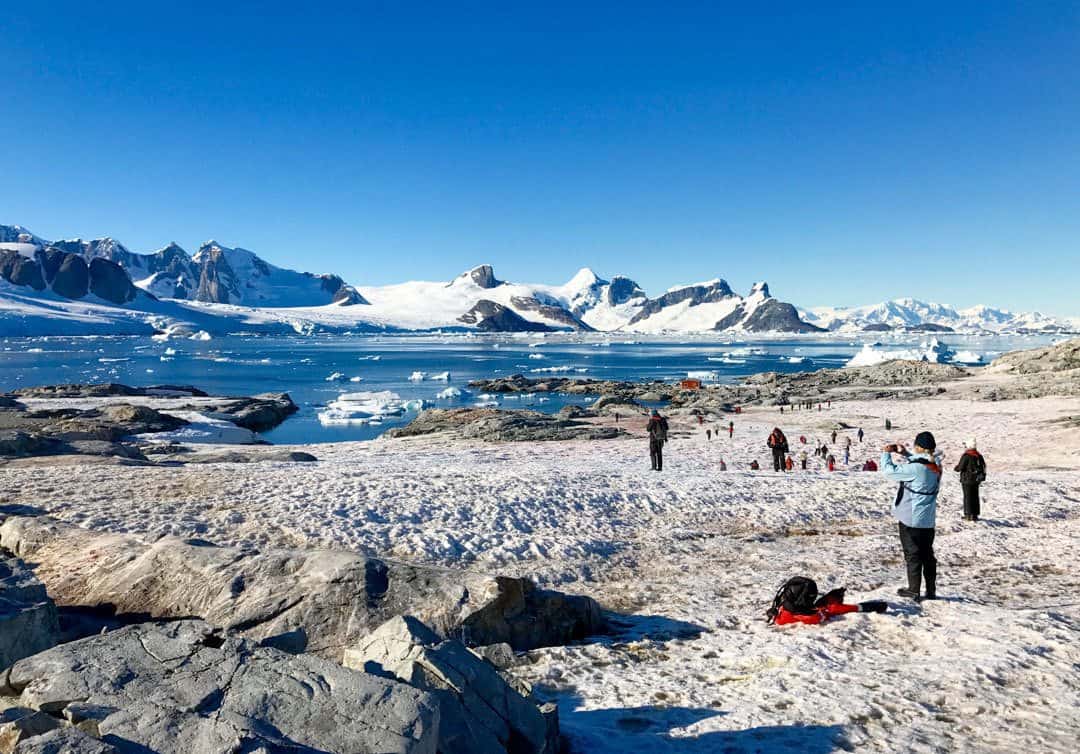
What Can You Do About Overtourism?
As one person, overtourism might feel like an issue that’s simply too big for you to have any real impact on.
The choices you make though, about where you go, what you do, and how you spend your tourist dollar, can actually go a long way to helping ease the pressures of overtourism.
Here are 7 steps you can take as a responsible traveller.
1. Search Out Regional Alternatives
Places suffering overtourism are usually bucket list headliners for a reason: they’re special.
But while the hordes are pounding the well-trodden paths of these tourist hotspots, why not get off the tourist trail and search out a destination’s lesser known sights and experiences?
Take the island of Bali.
This relatively small corner of the Indonesian archipelago attracted more than 5 million tourists in 2017.
Visitors tend to congregate around the island’s south, in heaving tourist centres like Seminyak and Kuta, and much has been written on the challenges brought about by tourism in those places.
But there’s an entire island outside of Bali’s resort towns, and plenty of spots where you can still find a low-key patch of paradise, mingle with locals, and experience Bali’s distinctive island culture.
Or take the opportunity to explore another part of Indonesia.
From the jungles of Sumatra and the temples of Java, to the white- and black-sand beaches of Flores, there are literally dozens of destinations right across Indonesia that offer palm-fringed curves of sand, outdoor adventure and diverse culture.
Without the tourist crowds.
Taking yourself and your dollar off the tourist trail means you’ll meet more locals, experience more authentic culture, and take away memories and photos that don’t look like everyone else’s.
Better yet, you’ll be investing directly into local communities.
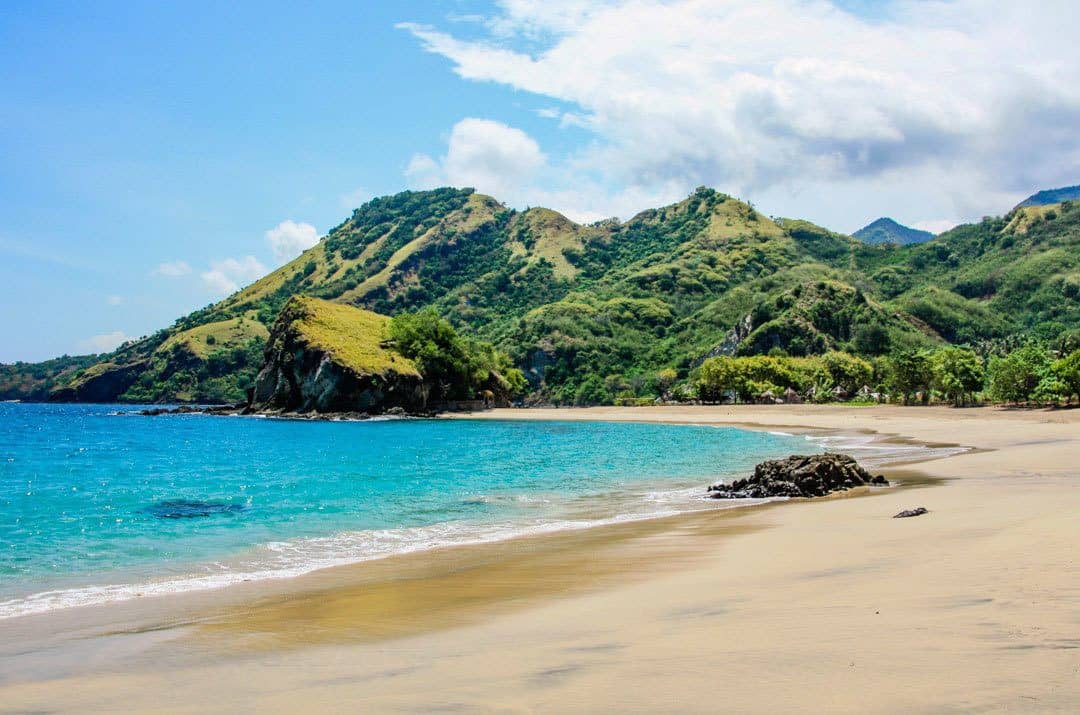
2. Visit During Off-Peak Periods
What if you really, really want to visit that hugely popular place though?
If that’s the case, try and visit outside of peak times.
Peak periods are different for every place and every experience.
If you want to avoid the worst of the crowds, you’ll need to do your research before you go.
There can be drawbacks to visiting out of peak.
The weather might be less than ideal.
You might have fewer daylight hours to play with.
Some tourist attractions and amenities could even be closed.
On the plus side, you’ll be contending with fewer tourists, and you’ll often be able to take advantage of cheaper flights, accommodation and experiences.
Plus, seasonal changes usually bring a whole new set of highlights and opportunities to seek out.
Even visiting a popular destination out of busy hours can make all the difference.
In Croatia, Dubrovnik’s Old Town turns into a tourist crush during the hot daylight hours of the cruise ship season.
But a morning stroll along the city walls before the crowds arrive, or an evening wander through its lantern-lit streets after they’ve shipped out?
Magic.
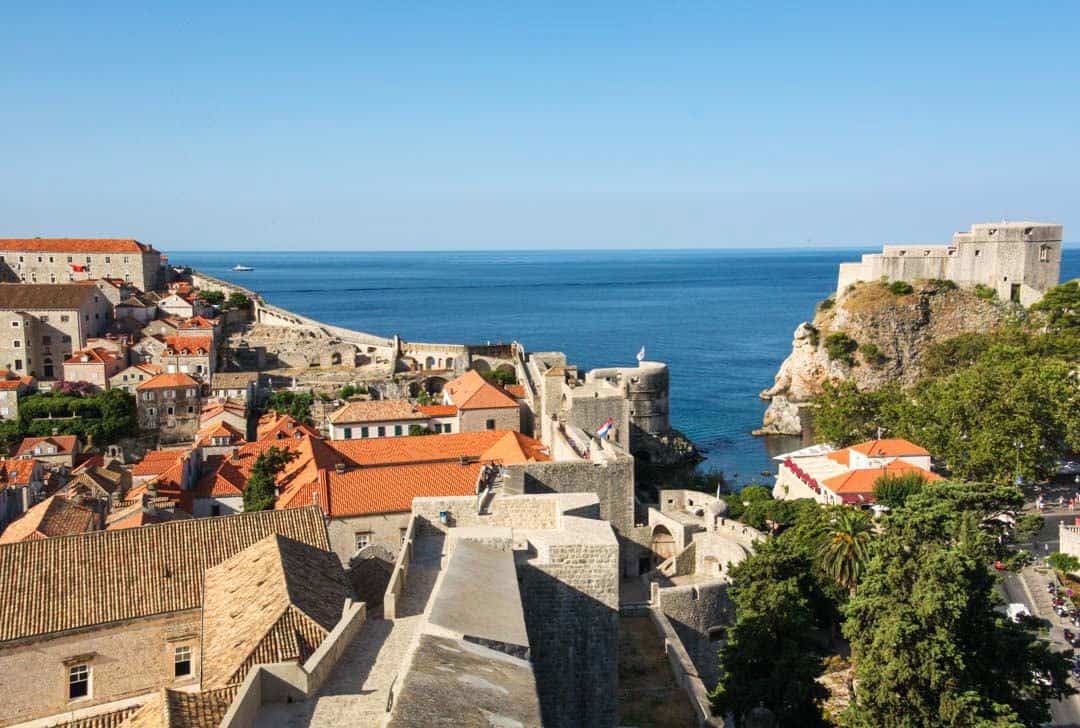
3. Support The Local Community With Your Time And Money
While tourism can bring a much-needed boost to a local community, the reality is that large tour groups – particularly package and cruise ship tours – often spend little time, and even less money in the places they’re visiting.
By staying longer, sleeping in locally owned accommodations, eating at smaller, locally owned restaurants, and joining tours or experiences run by responsible local operators, you can feel more confident that your valuable tourist dollar is going directly into that community.
Likewise, if you’re keen to buy a souvenir or keepsake, keep an eye out for local artisans and, if you can, buy from them direct.

4. Explore Beyond The Hotspots With A Local Guide
For many of our over-loved destinations, crowds are often concentrated around a handful of hotspots.
But what about the rest the place?
Exploring a destination with a responsible local guide can reveal an entirely different side to the place you’re visiting, and get you away from the over-touristed mainstream.
Local guides will often take you to places most tourists never get to see.
They’ll introduce you to real locals, and to the sights, tastes, customs and stories that give a place its character.
Joining small group tours like offbeat city walks, cycle tours, guided nature hikes and foodie strolls is one way you can help to shift tourism away from high traffic pressure points.
Plus, by choosing small local businesses, you’re supporting the local economy.
With a bit of research online, and using forums like TripAdvisor, it’s easy to find reputable, responsible guides and tour operators just about everywhere.
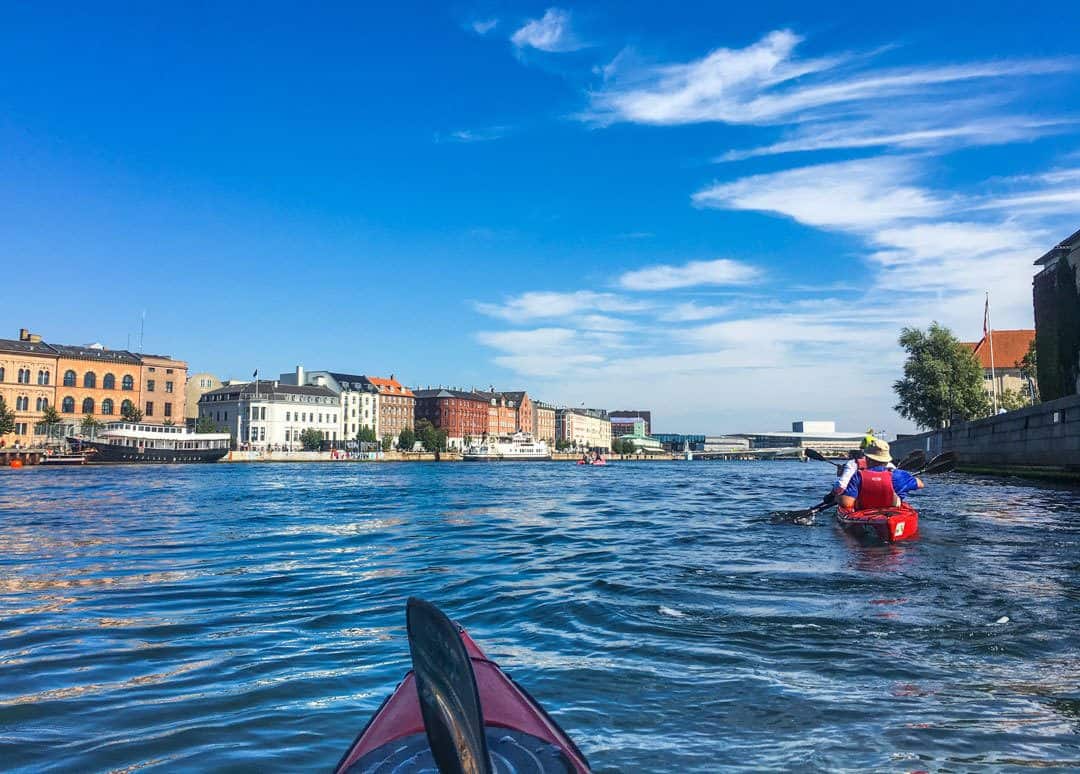
5. Be An Eco-friendly, Responsible Traveler
‘Leave no trace’ is a mantra these days for responsible travelers.
It becomes even more important in the context of overtourism, where ever-increasing numbers of tourists means ever-increasing volumes of waste for local communities to deal with.
By taking steps to minimise the waste you produce on your travels, and encouraging others to do the same, you can do your bit in helping to ease the pressures on this front.
Just having some key items in your backpack like a cloth shopping bag, a reusable water bottle, a keep cup, a biodegradable toothbrush and cutlery, and a reusable straw, will immediately reduce your environmental footprint as you travel.
Check out this article if you want more ideas on how to be a responsible traveler.
You can also find out if there are local clean-ups or other opportunities and volunteering programs where you can donate your time, and help give back to the communities you’re visiting.
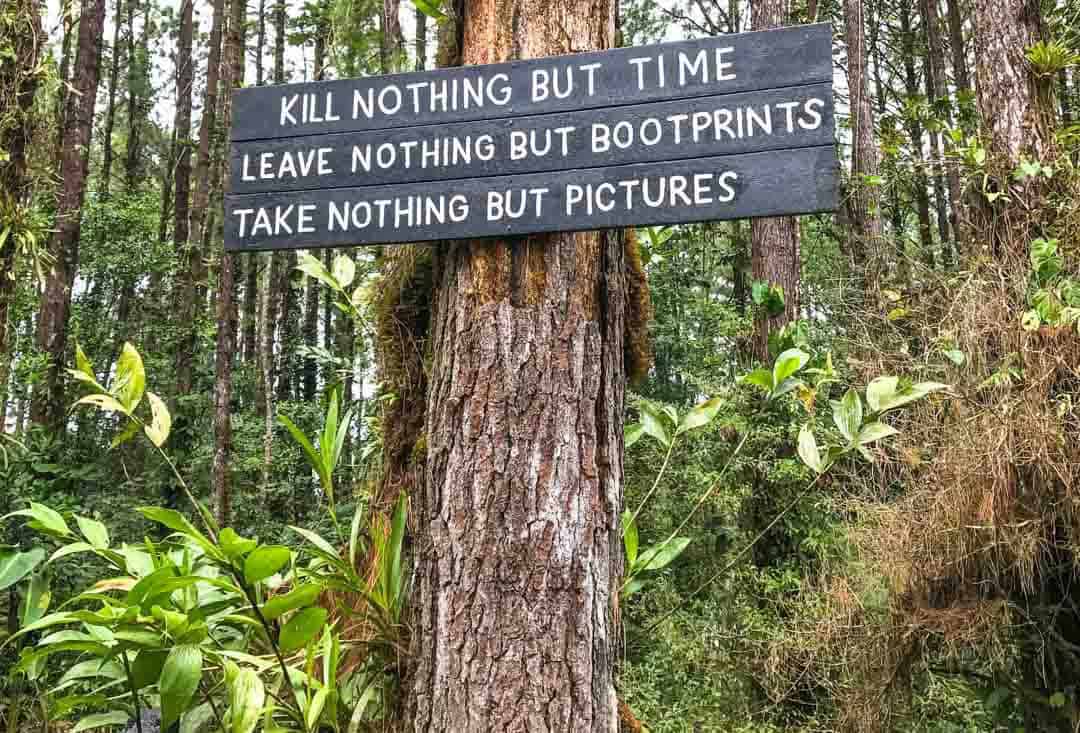
6. Travel With Responsible, Ethical Tour Companies
Travelling as part of a tour can be a fantastic way of exploring a new destination without the hassle and uncertainty that sometimes accompanies independent travel.
Not only does someone else do the planning for you, but you’ll meet like-minded people, and visit places you might not otherwise get to on your own.
By opting for a tour company with a solid reputation for responsible, ethical tourism practice, you’ll be directly supporting sustainable tourism.
Responsible travel operators will often have a policy or set of core values on their website that defines what responsible travel means to them and their people, and how they achieve this through their tours.
While responsible tour companies may include tourism hotspots within their itineraries, they’ll usually find ways to visit those places sustainably, reduce their impact, and ensure that local people and businesses benefit from you being there.
7. Travel Off The Beaten Track
At the end of the day, the most effective way of easing the pressure on our over-touristed destinations is to go somewhere else instead.
Ideally, somewhere that would benefit from more visitors.
The opportunities to get off the beaten track are better than ever, and many destinations are welcoming travellers with open arms.
Like Iran.
We traveled there for close to a month, and encountered a beautiful, safe and surprisingly diverse country.
The people were warm, kind and eager to spend time with us and share their stories.
Other travelers were few and far between, and there were times when we felt we had the place almost to ourselves.
It’s a country, a people and an experience unlike any other.
If you’re looking for inspiration on low-key destinations that could use a tourism boost, take a look at the Intrepid Adventure Index.
It offers a snapshot of places, like Iran, where you won’t feel like the tourists outnumber the locals.
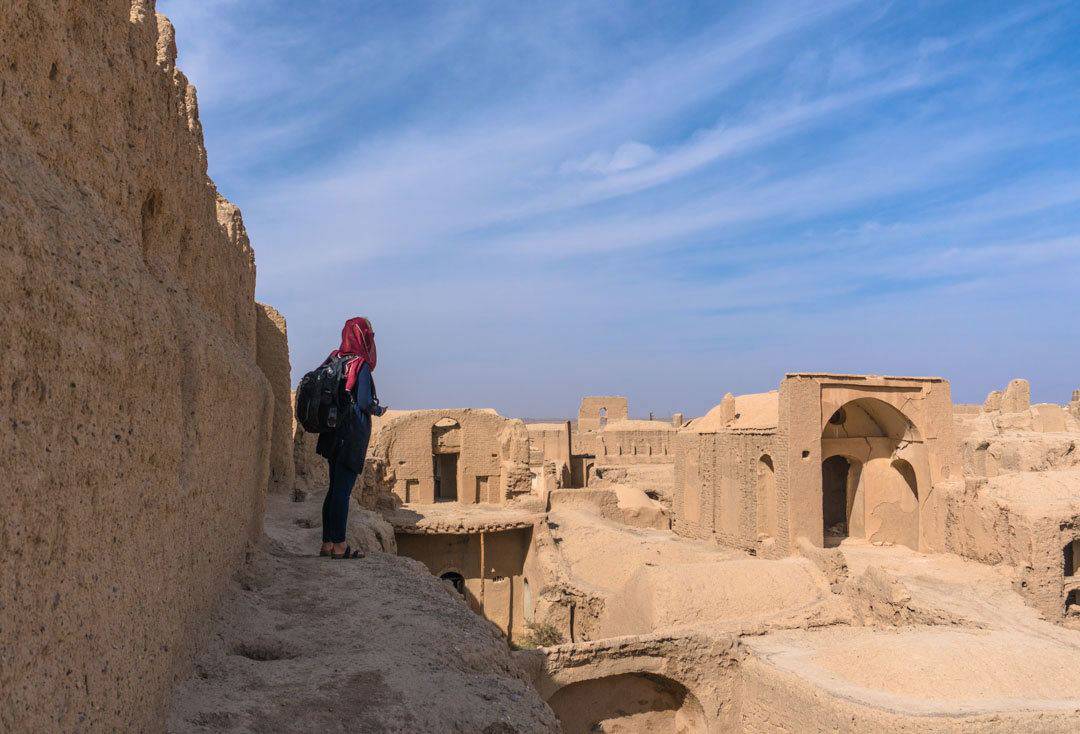
So what does the future look like for our most beloved destinations?
For Maya Bay at least, the outlook is positive.
With time to recover and plans to reopen later in 2018 with boat limits, an annual low-season closure, and a long-view approach to tourism, this spectacular cove may once more be ‘The Beach’ of our dreams.
In the meantime, as responsible travellers, we too can do our bit to help turn the tide on overtourism, and support a new wave of sustainable tourism practice around the world.


7 thoughts on “7 Ways You Can Help Turn the Tide on Overtourism”
Great info! Thank you! It helped so much with my assignment on over-tourism!
So glad it helped Lia. All the best with your assignment. 🙂
Do you not realize, that websites like yours contribute to the exact problems you are talking about? Insatiable travel has caused these problems and visiting the “Secret Spots” only opens them up to the same problems. We have all seen what lack of travel during the COVID 19 Pandemic has done to heal our earth. Search your hearts and ask yourself if it is ok to damage our planet just to make you happy or seem cool. Exchanging things for experiences may not be helping at all. Carbon exchange is a fallacy, just don’t do the carbon and fly all over the world. (Before the pandemic four billion people were flying each day). That is how you really help.
Thanks for the comment. So in your opinion, nobody who travels should be able to talk about overtourism? Is it better for us to simply not address the topic at all, simply because we own a website? We travel for a number of reasons, but trying to seem cool definitely isn’t one of them. You must be new to our website, or travel in general, if you think we are actively going out trying to destroy the planet by choosing to explore the world. If you would like to never leave your home country, that is your decision. We live on an island however and don’t have the luxury of not flying somewhere, unless we take cruise ship, which is actually worse for the environment. Also double-check your statistics, because it’s a rough estimate that 6 million fly on any given day, not 4 billion (more than half the planet’s entire population) like you suggested.
The previous post’s point about disadvantages of revealing new spots is valid but you are correct to have the discussion. I’m a Fil Am and aspiring Siargao, Philippines tourist to be- and those islanders have taken note of this very issue (lessons from Boracay and Bali).
Perhaps, discussion can include eco tourist resort construction- storm resistance and tourist conduct.
Resorts exist that reduce carbon footprint and water supply strain e.g. Bali has a Temple w/ accommodations- with eco-plumbing.
Siargao has new residences with storm resilient construction. Easily adaptable to new resort building. Siargao is extreme storm prone like Florida, USA
As for conduct, well Indonesia is culturally conservative Muslim. Latest news is their having discussion about tourism singles conduct. The surfing community Western well heeled was not appreciative.
Indo, however, is home to the Mentawi islands- surfing Mecca and numerous “black diamond” surf spots.
At least the air is now clear.
Look, I’ve been to Hawaii, I can feel the vibe of the locals. Sometimes, tourists misbehave and that has not gone over well with folks that live there.
Great website:)
excellent post !!
Thanks so much